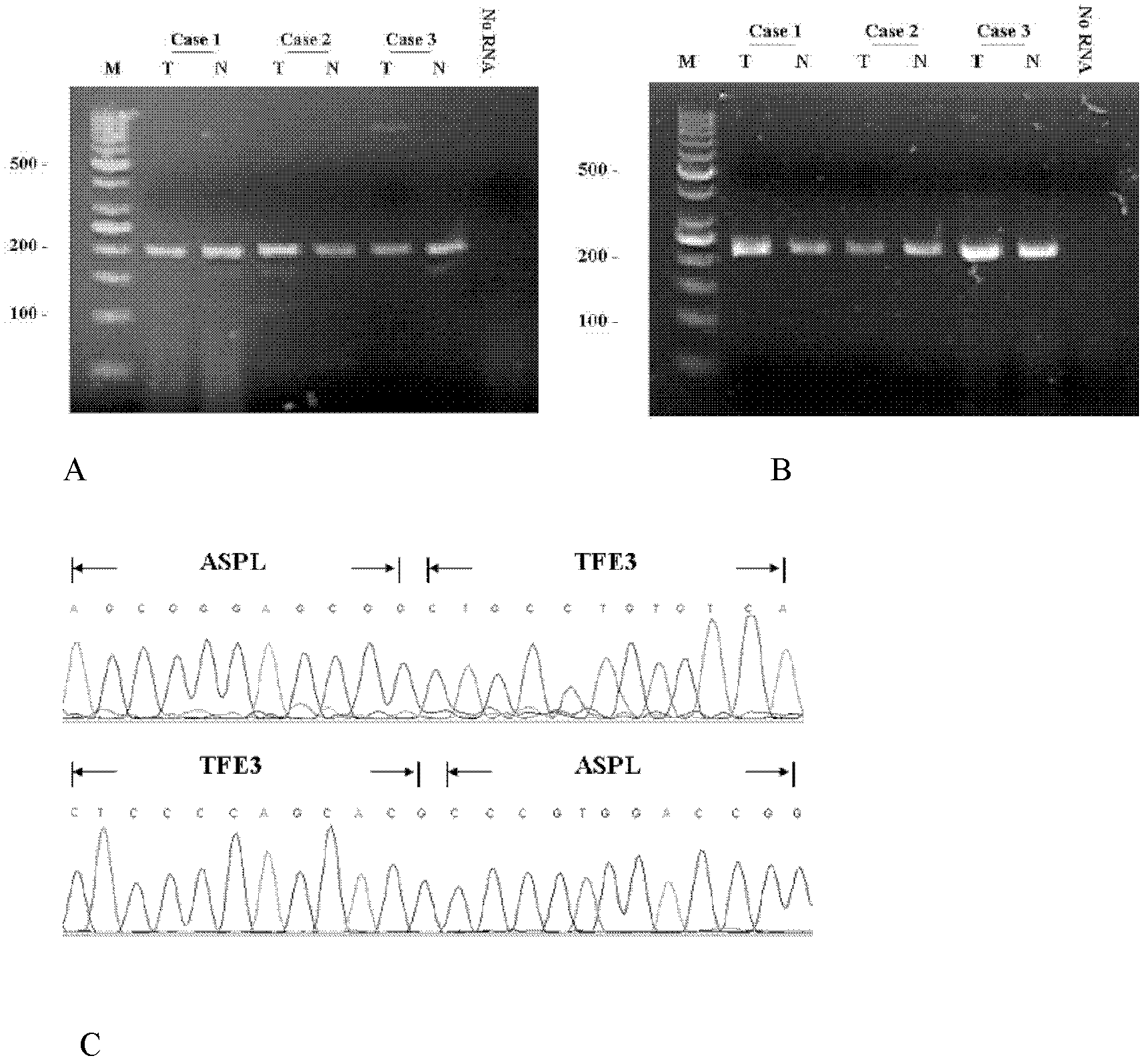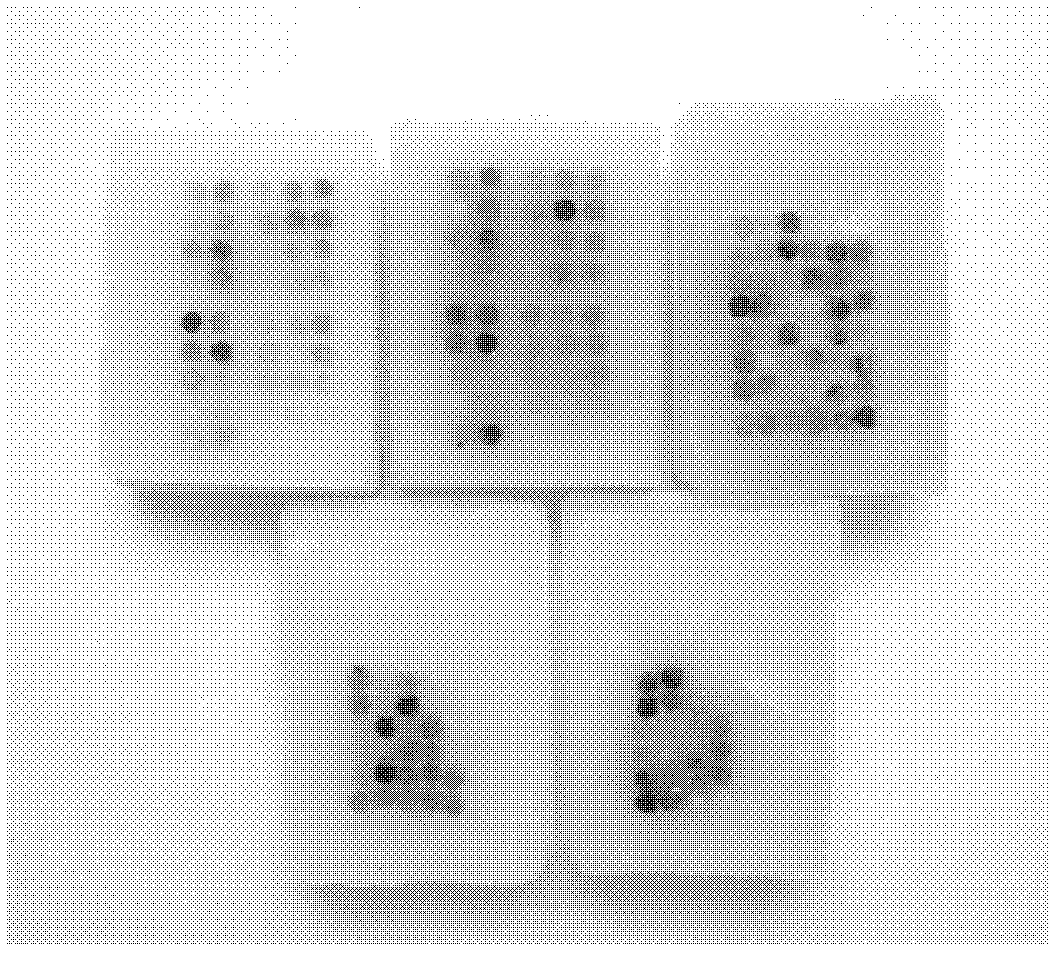Probe combination for diagnosing Xp11.2 translocation renal cancer and application thereof
An xp11.2, probe technology, applied in the application field of fluorescence in situ hybridization probes, can solve the problem of different sizes of cloned fragments, and achieve the effect of improving accuracy and reliable success rate
- Summary
- Abstract
- Description
- Claims
- Application Information
AI Technical Summary
Problems solved by technology
Method used
Image
Examples
Embodiment 1
[0044] Embodiment 1: the preparation of DNA probe combination:
[0045] Select two BAC clone fragments that can be connected at both ends of the X chromosome TFE3 gene, control the farthest distance between the probes at both ends within 1500kb, keep a certain distance between the BAC clone fragments without overlapping, and the fragment sizes are similar. The cloned fragments were obtained from the Human BAC Cloning Center of EmpireGenomics (http: / / www.empiregenomics.com / helixhq / clonecentral / search / human). The BAC fragments on the centromere side of TFE3 were RP11-58H17 (200kb) and RP11-352D11 (175kb), and the BAC fragments on the telomeric side of TFE3 were RP11-416B14 (182kb) and RP11-107C19 (160kb). The linking sequence of BAC cloned fragment and TFE3 gene is RP11-58H17, RP11-352D11, TFE3, RP11-416B14, RP11-107C19. The positioning structure of the probe assembly is as follows figure 1 shown. Use the gap translation method to label the two BAC clone fragments on the telo...
Embodiment 2
[0047] Embodiment 2: fluorescence in situ hybridization process:
[0048] 1. Tissue microarray construction of specimens:
[0049] A total of 51 cases of renal cell carcinoma diagnosed in Nanjing General Hospital of Nanjing Military Command were collected. Two experienced pathologists refer to WHO 2004 urinary and male reproductive system classification criteria, immunohistochemical TFE3 positive, and RT-PCR detection of fusion gene results ( figure 2 A, B, C, 3 of the 51 patients were diagnosed at the mRNA level, and the correspondence with the results of this experiment can better reflect the reliability of this experiment), re-diagnosed and evaluated, and the final diagnosis of Xp11.2 was easy 24 cases of dislocated renal cell carcinoma, 9 cases of clear cell carcinoma, 17 cases of papillary renal cell carcinoma (16 cases of sporadic papillary renal cell carcinoma, 1 case of papillary renal cell carcinoma associated with VHL disease), 1 case of unclassified renal cell car...
Embodiment 3
[0062] Example 3: Xp11.2 Translocation Kidney Cancer Diagnostic Kit
[0063] The kit contains the probe combination described in Example 1, and the characteristics of the probe combination are mainly:
[0064] (1) The BAC clone probes on the centromere side of TFE3 are RP11-58H17 (fragment length 200kb) and RP11-352D11 (fragment length 175kb), labeled with green fluorescence. These two probes show a green fluorescent signal under the fluorescence microscope, representing the centromere side of the TFE3 gene.
[0065] (2) The BAC clone probes on the telomeric side of TFE3 are RP11-416B14 (fragment length 182kb) and RP11-107C19 (fragment length 160kb), labeled with red fluorescence. These two probes show a red fluorescent signal under the fluorescent microscope, representing the telomeric side of the TFE3 gene.
[0066] (3) Under normal circumstances, the red and green signals are connected or overlapped to form a fusion signal. In Xp11.2 translocation RCC, the red and green s...
PUM
 Login to View More
Login to View More Abstract
Description
Claims
Application Information
 Login to View More
Login to View More - R&D
- Intellectual Property
- Life Sciences
- Materials
- Tech Scout
- Unparalleled Data Quality
- Higher Quality Content
- 60% Fewer Hallucinations
Browse by: Latest US Patents, China's latest patents, Technical Efficacy Thesaurus, Application Domain, Technology Topic, Popular Technical Reports.
© 2025 PatSnap. All rights reserved.Legal|Privacy policy|Modern Slavery Act Transparency Statement|Sitemap|About US| Contact US: help@patsnap.com



